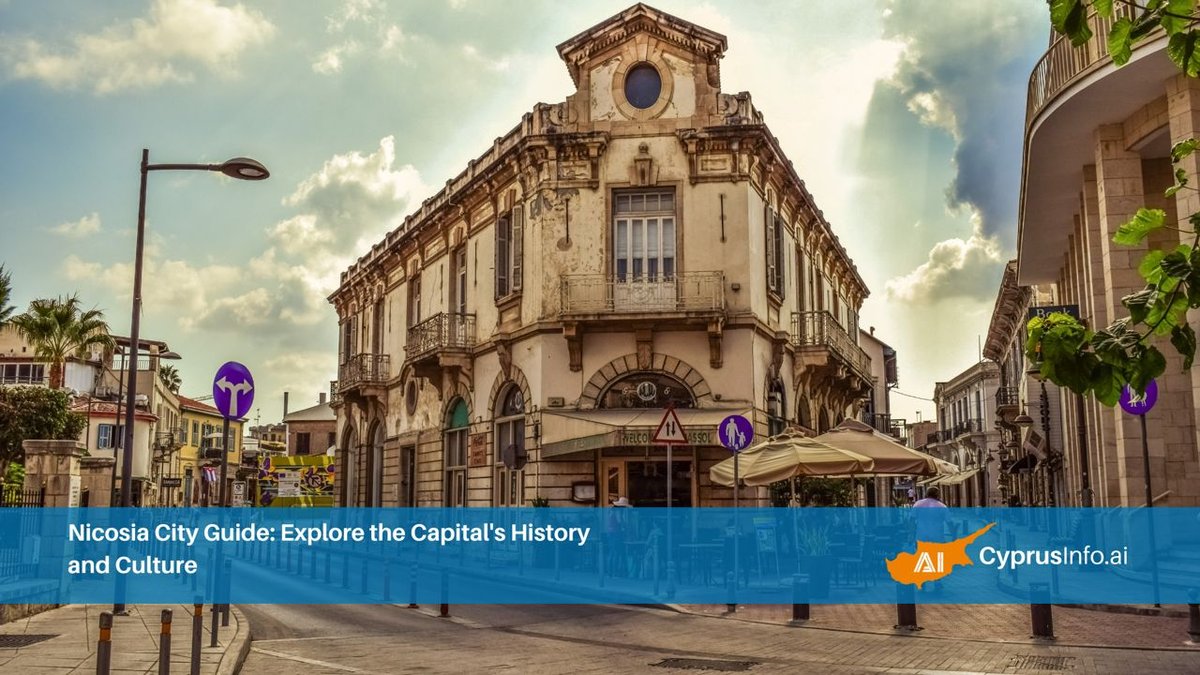In an increasingly digital world, the voice of the traveler echoes across social media platforms with unprecedented volume and velocity. From glowing reviews to frustrated rants, every post, tweet, and comment offers a raw, unfiltered glimpse into the tourist experience. For destinations, hospitality businesses, and tourism boards, understanding this vast ocean of data is paramount to staying competitive and relevant. However, manually sifting through millions of data points is an impossible task. This is where AI tourist sentiment analysis steps in, transforming chaotic social chatter into actionable intelligence.
Our comprehensive guide delves into how artificial intelligence is revolutionizing the tourism industry by providing deep insights into tourist sentiments. We will explore the mechanisms, benefits, challenges, and future potential of AI tourist sentiment analysis, demonstrating how it empowers stakeholders to make smarter, data-driven decisions that enhance visitor experiences and drive sustainable growth.
The Digital Pulse of Travel: Why Social Media is Indispensable
Social media has evolved from a mere communication tool into a powerful, real-time barometer of public opinion, especially within the travel sector. Tourists frequently share their experiences, recommendations, and criticisms across platforms like Instagram, X (formerly Twitter), Facebook, TikTok, and review sites like TripAdvisor and Google Reviews. This user-generated content (UGC) provides an authentic and immediate reflection of customer satisfaction, preferences, and pain points.
For the tourism industry, neglecting this feedback is akin to navigating blind. Understanding what travelers love, what frustrates them, and what they expect is crucial for refining offerings, improving services, and crafting effective marketing campaigns. The sheer volume and unstructured nature of this data, however, necessitate advanced tools. Here, AI tourist sentiment analysis becomes not just a luxury, but a necessity.
"The customer's perception is your reality." - Kate Zabriskie
What is AI Tourist Sentiment Analysis?
AI tourist sentiment analysis, also known as opinion mining, is the application of artificial intelligence and natural language processing (NLP) techniques to systematically identify, extract, quantify, and study the emotional tone behind words. In the context of tourism, it involves analyzing vast quantities of text data from social media, forums, blogs, and review sites to determine whether the underlying sentiment is positive, negative, or neutral towards specific destinations, attractions, hotels, services, or events.
Unlike traditional surveys or focus groups, AI tourist sentiment analysis offers several distinct advantages:
Scale: Processes millions of data points simultaneously.
Real-time Insights: Provides immediate feedback as conversations happen.
Unbiased Data: Captures organic, unsolicited opinions.
Granularity: Identifies sentiment towards specific aspects (e.g., hotel staff, beach cleanliness, food quality).
By transforming qualitative text into quantifiable data, businesses and destination management organizations (DMOs) can gain a holistic view of public perception, pinpoint areas for improvement, and capitalize on positive trends. This deeper understanding of customer behavior is invaluable for strategic planning.
The Mechanics Behind AI Tourist Sentiment Analysis
The power of AI tourist sentiment analysis lies in its sophisticated algorithms that can interpret human language with remarkable accuracy. This process typically involves several key stages:
Data Collection: AI systems continuously monitor and gather publicly available data from various online sources. This includes social media posts, comments, hashtags, mentions, blog entries, news articles, and online reviews.
Pre-processing: Raw text data is cleaned and prepared for analysis. This involves removing noise (e.g., emojis, special characters, URLs), tokenization (breaking text into words), stemming/lemmatization (reducing words to their root form), and removing stop words (common words like "the," "is").
Natural Language Processing (NLP): NLP algorithms parse the cleaned text, identifying keywords, phrases, and their relationships. Techniques like named entity recognition (NER) can pinpoint specific locations, businesses, or people mentioned.
Machine Learning Models: Supervised or unsupervised machine learning models are trained on large datasets of pre-labeled text to recognize patterns associated with positive, negative, or neutral sentiment. These models can be rule-based (using pre-defined lexicons), machine learning-based (trained on data), or hybrid.
Sentiment Scoring: Each piece of text is assigned a sentiment score, often on a scale (e.g., -1 to +1, or a percentage likelihood of being positive/negative/neutral). This can be done at a document, sentence, or even aspect level.
Visualization and Reporting: The aggregated sentiment scores are then presented through dashboards, charts, and reports, making complex data easily digestible for decision-makers. Trends, outliers, and key themes emerge clearly.
Traditional vs. AI Sentiment Analysis
Feature | Traditional Sentiment Analysis (Manual) | AI Tourist Sentiment Analysis |
|---|---|---|
Scale | Limited to small datasets | Massive datasets (millions of entries) |
Speed | Slow, labor-intensive | Real-time processing |
Consistency | Subject to human bias and fatigue | Objective, consistent application of rules |
Cost | High operational cost (personnel) | Lower operational cost at scale |
Insights | Basic, surface-level | Deep, granular, predictive |
Error Rate | Higher with subjective interpretation | Lower with well-trained models, continuous improvement |
This automated approach allows for a depth and breadth of analysis previously unimaginable, making AI tourist sentiment analysis a cornerstone for modern tourism strategy.
Key Benefits of AI Tourist Sentiment Analysis for Stakeholders
The applications and advantages of leveraging AI tourist sentiment analysis are far-reaching, impacting various aspects of the tourism ecosystem. From individual businesses to national tourism bodies, the insights gained drive strategic improvements and foster growth.
The Power of Sentiment
Enhanced Customer Satisfaction: Identify and address pain points swiftly.
Targeted Marketing: Understand preferences for more effective campaigns.
Proactive Crisis Management: Detect negative trends before they escalate.
Competitive Advantage: Monitor competitor performance and public perception.
Improved Product/Service Development: Inform new offerings based on demand.
Optimized Resource Allocation: Direct investments where they are most needed.
Real-time Performance Monitoring: Track campaign effectiveness and visitor mood.
Enhancing Destination Marketing Strategies
Understanding tourist sentiment directly fuels more effective destination marketing strategies. By analyzing positive sentiments, DMOs can identify what aspects of their destination are most appealing and promote them more aggressively. Conversely, negative sentiments can highlight misconceptions or areas that need to be excluded from promotional materials until improvements are made. This data-driven approach allows for personalized campaigns, segmenting audiences based on their expressed interests and tailoring messages that resonate. For example, if AI tourist sentiment analysis reveals strong positive feedback for adventure tourism, marketing efforts can pivot to highlight such activities, maximizing reach and engagement. This also supports AI marketing Paphos tours by identifying popular features.
Revolutionizing Tourist Experience Enhancement
At the heart of any successful tourism industry is the visitor experience. AI tourist sentiment analysis provides unparalleled insight into every touchpoint of a traveler's journey. Hotels can identify recurring complaints about check-in processes, restaurants can understand dissatisfaction with menu items, and attractions can gauge the enjoyment of specific exhibits. This granular feedback enables businesses to make precise adjustments, leading to tangible improvements in service quality and overall satisfaction. Proactive engagement based on these insights can turn a potentially negative experience into a positive one, fostering loyalty and positive word-of-mouth. This is a powerful tool for elevating personalized guest experiences.
Proactive Reputation Management and Crisis Prevention
A single negative review can quickly spiral into a public relations crisis in the age of instant information. AI tourist sentiment analysis acts as an early warning system, detecting spikes in negative mentions or critical discussions surrounding a particular business or destination. This enables prompt intervention, allowing stakeholders to address issues before they escalate, mitigate damage, and protect their brand reputation. By monitoring social media tourism insights, businesses can engage directly with dissatisfied customers, offering solutions and demonstrating responsiveness, which is key for effective AI-powered reputation management.
Identifying Emerging Tourism Trends and Opportunities
The tourism landscape is constantly evolving, with new trends emerging rapidly. AI tourist sentiment analysis can identify nascent patterns in traveler preferences, such as growing interest in eco-tourism, digital nomad hotspots, or specific cultural experiences. By recognizing these trends early, destinations and businesses can adapt their offerings, develop new products, and position themselves as pioneers in emerging markets, unlocking new business opportunities. This strategic foresight is crucial for competitive advantage and sustainable growth, offering valuable AI business trend analysis.
Guiding Strategic Investment and Development
For DMOs and investors, AI tourist sentiment analysis offers a clear roadmap for future development. By understanding what infrastructure is praised (e.g., efficient transport, clean public spaces) and what is criticized (e.g., lack of amenities, poor signage), resources can be allocated more effectively. This data can inform decisions on new hotel constructions, attraction upgrades, infrastructure improvements, and even policy changes to create a more welcoming and appealing environment for visitors. It essentially helps in analyzing property values and their connection to tourism impact.
Challenges and Ethical Considerations in Sentiment Analysis
While the benefits of AI tourist sentiment analysis are profound, it's important to acknowledge its limitations and ethical implications. No AI system is perfect, and human language is notoriously complex. Challenges include:
Sarcasm and Irony: AI struggles to accurately detect sarcasm, irony, and nuanced humor, often misinterpreting negative words in a positive context or vice versa.
Contextual Understanding: The meaning of a word can change dramatically with context. "Sick view" means something different from "sick of the view."
Multi-lingual Support: While improving, sentiment analysis across multiple languages can be complex, requiring specialized models for each.
Data Bias: The training data used to build AI models can carry inherent biases, leading to skewed results if not carefully curated and balanced.
Privacy Concerns: While analyzing publicly available data, ethical considerations around data aggregation and anonymization must be strictly adhered to.
Addressing these challenges requires continuous refinement of AI models, human oversight, and a commitment to ethical data practices. Transparency about how data is collected and used is vital for building trust with consumers.
CyprusInfo.ai: Your Partner in AI Tourist Sentiment Analysis
At CyprusInfo.ai, we harness the cutting edge of artificial intelligence to provide unparalleled insights into tourist sentiments across social media and the wider web. Our advanced AI platform is meticulously designed to process vast amounts of unstructured data, delivering precise and actionable intelligence for tourism stakeholders, from independent hotels to national tourism organizations.
What CyprusInfo.ai Can Offer:
Comprehensive Data Collection: Our AI scours millions of public social media posts, reviews, and forums daily, ensuring you capture every relevant mention.
Granular Sentiment Mapping: We don't just tell you if sentiment is positive or negative; we pinpoint exactly what aspects (e.g., service, amenities, location, specific events) are driving those sentiments.
Real-time Trend Identification: Stay ahead of the curve with real-time alerts on emerging trends, potential issues, and shifting traveler preferences, allowing for proactive strategic planning.
Competitor Benchmarking: Understand how your brand or destination stacks up against competitors by analyzing their public sentiment, offering crucial AI competitive analysis.
Customizable Dashboards & Reports: Access intuitive dashboards and tailored reports that present complex sentiment data in an easy-to-understand format, directly supporting AI business reporting.
Predictive Analytics: Beyond current sentiment, our AI can help forecast future trends and potential challenges, enabling proactive decision-making.
Crisis Detection & Management: Receive early warnings about developing negative sentiment, allowing for swift and effective crisis management and reputation protection.
By partnering with CyprusInfo.ai, you gain a powerful ally in navigating the complexities of the digital tourism landscape. We empower you to listen to your visitors, understand their desires, and tailor your offerings to create unforgettable experiences that resonate deeply, enhancing your AI customer experience and driving sustainable growth.
Beyond Sentiment: Predictive Analytics and the Future of Tourism
The evolution of AI tourist sentiment analysis is not static; it's constantly advancing towards more sophisticated applications. The next frontier lies in integrating sentiment data with other datasets – such as booking patterns, weather forecasts, economic indicators, and historical visitor numbers – to power predictive analytics. This allows for forecasting future tourism demand, identifying potential bottlenecks, and optimizing resource allocation well in advance.
Imagine an AI that can predict a surge in interest for a particular type of holiday based on shifts in online conversations, enabling tourism businesses to adjust their pricing strategies and promotional efforts proactively. Or an AI that foresees a potential dip in visitor satisfaction related to public transport during peak season, prompting DMOs to implement temporary solutions. This is the promise of advanced AI tourist sentiment analysis, moving beyond reactive responses to proactive strategic planning.
The future of tourism will be increasingly intelligent, personalized, and responsive to the real-time needs and desires of travelers. AI-driven insights, particularly from sentiment analysis, will be the compass guiding this transformation, helping destinations and businesses thrive in a dynamic global market. This synergy of data and intelligence is paving the way for a truly revolutionized customer acquisition and retention landscape in tourism.
Frequently Asked Questions about AI Tourist Sentiment Analysis
How does AI sentiment analysis differ from traditional market research methods?
AI sentiment analysis processes massive volumes of unstructured text data from social media and online reviews in real-time, providing immediate, unsolicited, and scalable insights. Traditional methods like surveys and focus groups are typically slower, smaller in scale, and can be influenced by participant bias or recall issues.
What types of data can be analyzed using AI tourist sentiment analysis?
It can analyze various types of text data, including social media posts (X, Facebook, Instagram comments), online reviews (TripAdvisor, Google Reviews, Booking.com), blog posts, forum discussions, news articles, and even customer service interactions via chatbots or emails.
Is AI sentiment analysis accurate in detecting sarcasm or irony?
Detecting sarcasm and irony remains a significant challenge for AI models due to the subtle nuances of human language. While advancements are continuously being made, these elements can still lead to misinterpretations, requiring careful model training and sometimes human oversight.
How can a small hotel benefit from AI tourist sentiment analysis?
A small hotel can use it to identify specific areas of guest satisfaction or dissatisfaction from online reviews, personalize marketing messages based on common positive feedback, manage its online reputation by responding promptly to negative comments, and identify popular amenities or services to enhance.
What are the ethical concerns regarding the use of AI for tourist sentiment analysis?
Key ethical concerns include data privacy (ensuring data is collected and used responsibly and anonymously), potential algorithmic bias (if training data is unrepresentative), and the transparency of how sentiment scores are generated and interpreted.
Can AI sentiment analysis predict future tourism trends?
Yes, by combining sentiment data with other predictive analytics models, AI can identify emerging patterns, shifts in traveler preferences, and potential future demand for specific types of tourism or destinations, offering valuable business trends insights.
How often should a business or destination perform AI tourist sentiment analysis?
For optimal results, it should be an ongoing, real-time process. Social media conversations are continuous, so continuous monitoring allows for immediate detection of changes, trends, and potential issues.
What is Natural Language Processing (NLP) and its role in sentiment analysis?
NLP is a branch of AI that enables computers to understand, interpret, and generate human language. In sentiment analysis, NLP processes raw text, breaks it down, identifies linguistic features, and extracts meaning, allowing AI models to determine sentiment.
How does AI tourist sentiment analysis help in crisis management?
It acts as an early warning system, detecting rapid increases in negative mentions or critical discussions online. This allows businesses and destinations to proactively address issues, communicate effectively with affected tourists, and mitigate potential damage to their reputation before it escalates.
What is the return on investment (ROI) for implementing AI tourist sentiment analysis?
The ROI can be significant through improved customer satisfaction leading to repeat business, more effective marketing spend, enhanced brand reputation, proactive issue resolution saving potential losses, and data-driven decisions that optimize operations and investments.
Conclusion: Navigating the Future of Tourism with Intelligence
The digital age has brought forth an unprecedented opportunity for the tourism industry to truly understand its audience. AI tourist sentiment analysis stands at the forefront of this revolution, transforming the cacophony of online chatter into clear, actionable insights. By leveraging the power of artificial intelligence, destinations and businesses can move beyond guesswork, making informed decisions that enhance visitor experiences, optimize marketing efforts, and safeguard their reputations.
The ability to instantly gauge public opinion, identify emerging trends, and respond proactively to feedback is no longer a futuristic concept but a present-day imperative. Embracing AI tourist sentiment analysis is not just about adopting new technology; it's about fostering a deeper connection with travelers, building trust, and paving the way for a more resilient, responsive, and rewarding tourism future for all stakeholders. As we navigate the complexities of modern travel, AI will undoubtedly be our most insightful guide.



